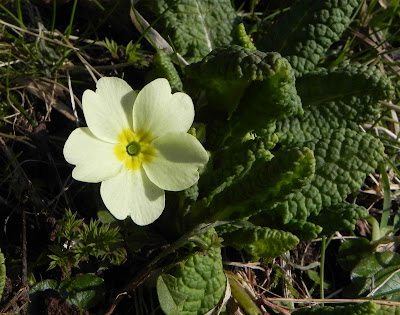During the early 1970s I was privileged to serve as the Leader of a remote Antarctic field station in the Ross Dependency, administered by the then New Zealand Antarctic Research Programme (now known as Antarctica New Zealand. The Ross Dependency lies due south of New Zealand and transport there was by flying from Christchurch, New Zealand directly to McMurdo Sound.
The Ross Dependency, Antarctica.
Arrival was at McMurdo Sound and then to Scott Base (far right).
Vanda Station is a helicopter ride to the Wright Valley (left).
My station, Vanda Station, was a small field station housing 3 - 8 scientists, normally for a summer season, located at the east end of Lake Vanda in the Wright Valley (see map above). The Wright Valley is within a system of essentially snow-free valleys in Victoria Land known as the Dry Valleys.
(There are many excellent pictures of the Dry Valleys here).
Lake Vanda in the Wright Valley, Victoria land, Ross dependency, Antarctica
Vanda Station is at the end of the frozen lake, bottom right.
(For internet picture source click here)
The remaining images are scans of my own prints, taken in Antarctica nearly 40 years ago.
The ice-free Dry Valleys of Victoria Land resemble more of a moonscape
than a conventional image of Antarctica.
The tiny Vanda Station is arrowed
Vanda Station is a collection of wooden huts -
formerly JCB packing cases!
Vanda Station team 1972-73 Summer Season
Mike Miles (Technician); Jim Fowler (Leader); Ian Brown (Meteorologist)
Meteorology was one of the prime research investigations at Vanda Station.
Maalie records observations at the station's Stevenson Screen
Hydrology and glaciology are also important.
The summer sun causes glacial melt-water to form the Onyx River
that flows along the valley floor into Lake Vanda.
Measuring glacial melt and the river flow provides
vital evidence about climate change.
Note that the hanging glaciers on the sides of the valleys
in the background almost reach the valley floor .
and has become dessicated and mummified
A present-day picture of the Wright Valley
Notice how the hanging glaciers (projecting in from top and bottom)
scarcely reach into the valley itself.
Compare with the picture of the river (above) that was taken 40 years ago.
Compare with the picture of the river (above) that was taken 40 years ago.
Tangible evidence of climate warming?



























